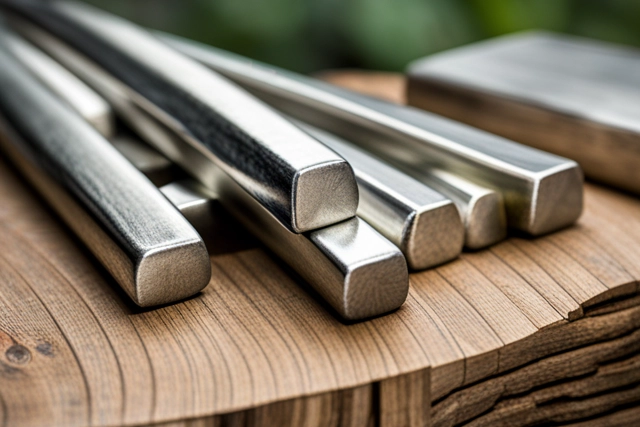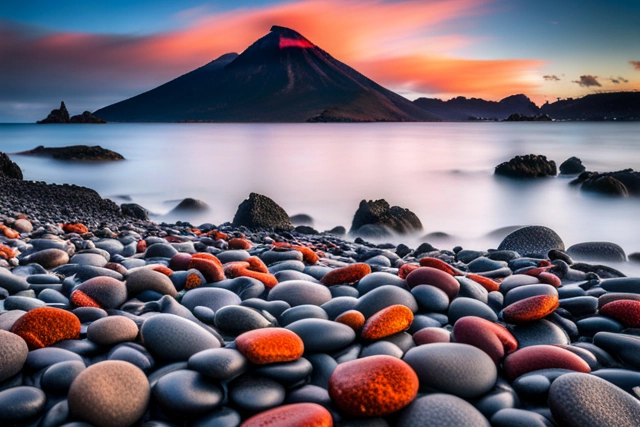Peridot & Materials

Peridot History & Culture
Throughout history, peridot has held various cultural, spiritual, and practical uses, dating back thousands of years. Here is an overview:
![]() Ancient Egypt: Peridot was known as the “gem of the sun” to the ancient Egyptians. They revered the gemstone, associating it with the sun god Ra. Peridot was believed to protect against evil spirits and bring good fortune and prosperity. Historically, Egyptians sourced peridot from the Red Sea island of Zabargad (now called St. John’s Island), where it was mined for centuries.
Ancient Egypt: Peridot was known as the “gem of the sun” to the ancient Egyptians. They revered the gemstone, associating it with the sun god Ra. Peridot was believed to protect against evil spirits and bring good fortune and prosperity. Historically, Egyptians sourced peridot from the Red Sea island of Zabargad (now called St. John’s Island), where it was mined for centuries.
![]() Roman Empire: The Romans cherished peridot as a symbol of purity and good luck. They often used peridot in their jewelry and carved it into talismans to ward off negative energies.
Roman Empire: The Romans cherished peridot as a symbol of purity and good luck. They often used peridot in their jewelry and carved it into talismans to ward off negative energies.
![]() Hawaiian Culture: Peridot is considered a sacred gemstone in Hawaiian culture. It is believed to be the tears of the volcano goddess Pele, as peridot crystals can be found in volcanic rocks.
Hawaiian Culture: Peridot is considered a sacred gemstone in Hawaiian culture. It is believed to be the tears of the volcano goddess Pele, as peridot crystals can be found in volcanic rocks.
![]() Medieval Europe: During the Middle Ages, peridot regained popularity in Europe. It was commonly used in ecclesiastical jewelry, as it was associated with spiritual purity and believed to possess healing properties.
Medieval Europe: During the Middle Ages, peridot regained popularity in Europe. It was commonly used in ecclesiastical jewelry, as it was associated with spiritual purity and believed to possess healing properties.
![]() Ottoman Empire: Peridot became a favorite gemstone during the Ottoman Empire. The Topkapi Palace in Istanbul housed numerous peridot pieces, often adorning the robes of sultans and empresses.
Ottoman Empire: Peridot became a favorite gemstone during the Ottoman Empire. The Topkapi Palace in Istanbul housed numerous peridot pieces, often adorning the robes of sultans and empresses.
![]() Victorian Era: In the 19th century, peridot experienced a resurgence in popularity due to Queen Victoria’s fondness for the gemstone. It became a fashionable choice for jewelry, especially in England.
Victorian Era: In the 19th century, peridot experienced a resurgence in popularity due to Queen Victoria’s fondness for the gemstone. It became a fashionable choice for jewelry, especially in England.
![]() Modern Times: Today, peridot continues to be a beloved gemstone in the jewellery industry. Its vibrant green color and relative affordability make it an attractive option for a wide range of jewelry designs, including rings, necklaces, bracelets, and earrings. Whilst local Māori use pounamu (green jade from South Island) for their jewellery, peridot is apparently not so popular.
Modern Times: Today, peridot continues to be a beloved gemstone in the jewellery industry. Its vibrant green color and relative affordability make it an attractive option for a wide range of jewelry designs, including rings, necklaces, bracelets, and earrings. Whilst local Māori use pounamu (green jade from South Island) for their jewellery, peridot is apparently not so popular.
![]() Healing and Spiritual Beliefs: Peridot is associated with various healing properties, such as promoting clarity, balance, and harmony. Some believe it aids in reducing stress and anxiety, fostering positive emotions, and encouraging personal growth.
Healing and Spiritual Beliefs: Peridot is associated with various healing properties, such as promoting clarity, balance, and harmony. Some believe it aids in reducing stress and anxiety, fostering positive emotions, and encouraging personal growth.
![]() Birthstone: Peridot is the birthstone for August, making it a popular choice for individuals born in this month.
Birthstone: Peridot is the birthstone for August, making it a popular choice for individuals born in this month.
Peridot Geology
Peridot, also known as olivine, is a silicate mineral that belongs to the forsterite-fayalite mineral series.
Peridot has the chemical formula (Mg, Fe)2SiO4, where magnesium (Mg) and iron (Fe) cations substitute for each other within the crystal structure. Its crystal structure is orthorhombic, featuring a 3-dimensional arrangement of silicon-oxygen tetrahedra.
![]() Color: Peridot exhibits an olive-green to yellow-green color, caused by the presence of iron in its structure.
Color: Peridot exhibits an olive-green to yellow-green color, caused by the presence of iron in its structure.
![]() Transparency: The gemstone is typically transparent to translucent.
Transparency: The gemstone is typically transparent to translucent.
![]() Hardness: Peridot ranks 6.5 to 7 on the Mohs scale of mineral hardness, making it harder than glass.
Hardness: Peridot ranks 6.5 to 7 on the Mohs scale of mineral hardness, making it harder than glass.
![]() Cleavage: It has poor cleavage in two directions, but its conchoidal fracture allows it to break with smooth curved surfaces.
Cleavage: It has poor cleavage in two directions, but its conchoidal fracture allows it to break with smooth curved surfaces.
![]() Lustre: The mineral displays a vitreous to oily lustre when polished.
Lustre: The mineral displays a vitreous to oily lustre when polished.
![]() Specific Gravity: Peridot’s specific gravity ranges from 3.27 to 3.37, indicating its density relative to water.
Specific Gravity: Peridot’s specific gravity ranges from 3.27 to 3.37, indicating its density relative to water.
Most peridot originates deep within the Earth’s mantle and is brought to the surface through volcanic activity via basaltic magma. These gems can be found in basaltic lavas and volcanic tuffs, such as near Lake Pupuke in Takapuna.
Peridot forms under high-temperature and high-pressure conditions deep within the Earth’s mantle. It crystallizes from magma when the mantle-derived magmas cool and solidify near the Earth’s surface. The gemstone’s color variations are attributed to the varying amounts of iron present during its formation.
The occurrence and formation of peridot provides valuable insights into the Earth’s mantle processes, while its alluring beauty continues to captivate jewelry enthusiasts and gemstone aficionados worldwide. Further research on peridot’s geological properties will undoubtedly enhance our understanding of Earth’s geological history.
In this photo, Kris holds up a raw peridot crystal to the sun, moments after digging it up in Takapuna (note the black basalt/lava still clinging to the right side):

Other Materials

Fine-Metal Pewter
In keeping with Kris’ commitment to sourcing local, he uses a precious metal smelted here in Auckland to cast his jewellery. Hayes Metals in Onehunga smelts a fine Britannia Pewter that is perfect for casting with detail, is non-toxic, and lead-free.
Fine-metal pewter is a captivating alloy with an ancient history—a versatile and lustrous metal cherished for its beauty and practicality. Composed primarily of tin, along with small amounts of other metals like copper and antimony, fine-metal pewter exudes a sheen that resembles silver. With its malleability, artisans can craft intricate designs, fashioning elegant tableware, decorative items, and ornate jewellery. Fine-metal pewter continues to grace both modern and traditional settings, infusing a touch of timeless elegance into our Jafa jewellery.
Volcanic Beach Pebbles
Staying local, Auckland’s beaches contain numerous pebbles and stones worn over the years. Most are volcanic, and some are aesthetically pleasing enough to feature in our Jafa jewellery.
Carried by the relentless pounding of ocean waves, beach pebbles are meticulously polished over time, presenting a smooth and alluring surface. Their earthy tones, ranging from deep blacks to warm reds, create a mesmerizing contrast against the glistening sands. As each pebble tells a silent tale of geological forces, they invite beachcombers and enthusiasts to marvel at their natural beauty and embrace the raw power of our planet’s volcanic past. These pebbles merge art with geology, igniting a sense of wonder and appreciation for the forces that shaped them.


Sea Glass
There’s plenty of sea glass to be found on Auckland’s beaches. Just go to Takapuna beach and start digging. Some of it is centuries old.
Sea glass begins its journey as discarded glass pieces that find their way into the sea. Over decades, the relentless waves and sand shape and smooth these shards, turning them into enchanting, translucent jewels of the shoreline. Glistening in hues of blues, greens, and rare pastels, sea glass offers a captivating kaleidoscope of colors to adorn any collection or art piece. As a tangible connection to the ocean’s mystique and a testament to the resilience of nature, sea glass embodies the beauty of imperfection and reminds us that even discarded fragments can find new life as cherished treasures of the sea.
